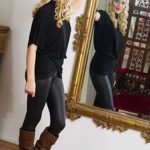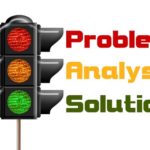Who You Are and Who Your Are Not!
www.innercompassdesigns.com
 Exploring self awareness is the way to the road to know “how to love and accept yourself as you are”. It’s critical that you look at who you are and who you are not.
Exploring self awareness is the way to the road to know “how to love and accept yourself as you are”. It’s critical that you look at who you are and who you are not.
Don’t go on day after day settling for something that you can change. You can choose to get clear and then stand strong in who you are and what you want.
Any changes that come from that may (or may not) upset others or cause ripple effects of change. But don’t hold yourself back because it may cause discomfort, move forward instead because it will bring you freedom.
Some questions to ask yourself to get to know you ….
- How do you want to feel?
- What do you long for / follow from a distance?
- What are you drawn to?
- What did you love as a child/young adult?
- Ask “who am I?” and see what comes up for you – images, memories, things you used to love and do
- Who and what inspires you? and why?
- What do you feel strongly about in life?
- What did you )(love to) study or what profession did you dream or pursuing? (What is undernearth that love or desire – many clues lie here with your younger self)
Who are you not?
- What clothes sit in your closet /wardrobe unworn? – are they truly you? are they part of an old life? do they need a new home?
- What books sit on your bookshelf (kindle unread or on a to be read list filled with suggestions from others?
- What hobbies or crafts have you left abandoned? – is it because you need to reorganize your priorities and get back to them or is it because they no longer fit?
- What objects are merely clutter in your life – they serve no purpose and bring no joy into your life, they are dead weight?
- What commitments clog up your calendar leaving no room for what you really want? – things you do out of guilt, obligation or expectations only.
How to Answer the Questions
A Guide to the Present Moment by Noel Elkrief
 When we ask ourselves a question, the immediate answer often seems to confirm what we have been thinking all along. If the question is “Are you sure?”, the immediate answer maybe, “YES I’m sure!” This type of anwer is what comes when our mind thinks it already knows the answer and we don’t actually stop to discover the answer for overselves right now. Answering a question based on the first thought that pops into our mind will not allow us to discover the answer that is true for us.
When we ask ourselves a question, the immediate answer often seems to confirm what we have been thinking all along. If the question is “Are you sure?”, the immediate answer maybe, “YES I’m sure!” This type of anwer is what comes when our mind thinks it already knows the answer and we don’t actually stop to discover the answer for overselves right now. Answering a question based on the first thought that pops into our mind will not allow us to discover the answer that is true for us.
Rather than answering a question in this way, stop and take a breath after you ask yourself the question. Be patient, wait a few seconds, and allow the answer to come. Don’t refer to your knowledge, what you think the right answer should be. The answers you are looking for, by nature, will often conflict with what you know, what you have been taught, and what you have believed. This is why we start from scratch. Answer the question honestly and innocently. Treat this as a completely new discovery, as uncharted territory. If necessary, look at your own experience in life to discover what is true for you.
Since our minds partially don’t want to disbelieve thoughts, our thoughts may try to trick us in a few ways.
- Thought can try to answer questions with a story or justification that only provides evidence that see,s to prove our thought is true.
- Thoughts can prevent us from seeing the truth by overcomplicating the answers so much that it is hard to find the truth.
- Thoughts can go on tangents in order to avoid directly answering the question.
Thoughts can try to answer the questions, “Do you know for sure?” or “Is it true?”, with answers such as “I am almost sure”, “I am almost positive”, or “I am 99% sure”. However, if we aren’t 100% sure that our thought true, if there is a possibility that it isn’t, than the fact is we don’t actually know whether our thought is true. Our own truth becomes, “I don’t know if this thought is true”. The only two possibilities are that either we are sure our thought is true or we aren’t sure. Regardless of whether we are ninety-nine percent sure or one percent sure, we are not sure. Either the thought is a fact (“this is an apple”) or it is not known to be true. There is nothing in between. If we are not sure, than our answer must be, “K don’t know if this thought is true”.
For Example, we may experience anxiety from thinking, “It would be bad if I stopped being friends with X”. But after asking ourselves a few questions, we may be able to recognize that there is a small possibility that this outcome could be “good” for our life. If we answer, “Am I sure this thought is true?”, with “I am almost positive it would be bad if I stopped being friends with X” then our anxiety will remain. However, since we don’t actually know with certainty that “It would be bad if this happened”, the truth is, “I really don’t know whether not being friends would be good or bad for my life”. If we can admit this, than we are not longer believing the thought that created our emotion, and we would have no reason to feel anxiety anymore.
Because of these tricks, the most effective way to answer questions such as, “Do you know for sure?” or “Is it true?”, with either “yes”, “No”, or “I don’t know”. For other types of questions, you can choose to mentally answer the questions or you may find it more helpful to write down your answers.
Positive Balancing Thoughts
 A kind word is never thrown away. – Sir Arthur Helps
A kind word is never thrown away. – Sir Arthur Helps
Restlessness and discontent are the necessities of progress. – Thomas Edison –
I’m not a afraid of storms, for I’m learning to sail my ship. – Louisa May Alcott
You move totally away from reality when you believe that there is a legitimate reason to suffer. – Byron Katie –
If people sat outside and looked at the stars each night, I’ll bet they’d live a lot differently. – Bill Watterson –
Blessed is he who expects nothing, for he shall never be disappointed. – Alexander Pope –